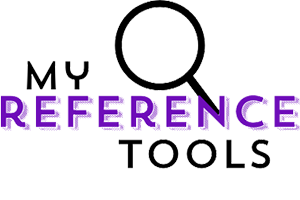Understanding Health Insurance Basics for Professionals

Navigating health insurance can seem overwhelming, but a clear understanding of the basics can help you make smarter choices for your coverage and your wallet. Whether you’re reviewing benefits at a new job or re-enrolling during open season, a solid grasp of health insurance essentials empowers you to pick the plan that fits your unique needs. With health care often being one of the largest financial decisions professionals face, understanding how it works is crucial for both your well-being and your budget.
What Is Health Insurance?
Health insurance is a contractual agreement between you and an insurance provider that helps cover medical expenses. This coverage can include everything from regular preventative care like annual checkups and vaccines to more significant medical needs like emergencies and surgeries. Essentially, by paying a monthly premium, you shift some of the burden of unexpected, high medical costs from your shoulders to the insurance company.
Picture this real-world scenario. Imagine you’re hospitalized for an emergency appendectomy. Without health insurance, you might receive a bill totaling anywhere from $10,000 to $35,000. However, with a comprehensive health insurance plan, you’ll only pay a fraction of that cost, thanks to a combination of protections like copays, deductibles, and out-of-pocket maximums.
Why Is Health Insurance Important?
Many professionals think of health insurance as just an annoying expense, but it’s so much more. Beyond providing financial protection against the unexpected, insurance also gives you access to preventive care, which helps you avoid larger issues down the road. For instance, annual physicals, vaccines, and routine screenings can catch health issues early, potentially saving lives.
Additionally, some health insurance plans include extra perks, such as access to mental health services or discounted gym memberships, making them valuable for overall wellness. The peace of mind insurance brings cannot be overstated; medical emergencies are stressful enough without the anxiety of steep costs.
Key Health Insurance Terms to Know
Health insurance comes with its own jargon, which often intimidates first-time buyers. However, understanding key terms will help you make sense of complex policies and engage confidently with HR representatives or insurance agents:
Premium
The premium is the amount you pay every month for your plan, whether you use medical services that month or not. Think of it as your membership fee to stay covered. Your employer often covers part of this cost, but the portion you pay can vary depending on the plan you select. If you work for a company that offers choices, plans with higher premiums typically have lower out-of-pocket costs for using medical services.
Deductible
The deductible is the amount you’ll need to pay out of pocket annually before your insurance starts contributing. For example, if your deductible is $2,000 and you have a $1,000 medical bill, that amount is entirely your responsibility. However, once you hit the deductible amount, your insurance will start sharing costs, typically through coinsurance or copays.
High-deductible plans often appeal to younger, healthier individuals who don’t visit doctors frequently. However, if you foresee significant medical expenses, opting for a plan with a lower deductible might save money in the long term.
Copay
A copay is a fixed fee for specific medical services. For example, you might pay $30 for a primary care visit and $50 to see a specialist. Copays often apply even before you meet your deductible, making them the easiest cost to predict within your plan.
Coinsurance
After meeting your deductible, coinsurance kicks in and represents the percentage of service costs you pay, with your insurer covering the rest. For instance, a typical 80/20 split means your insurance pays 80%, and you handle 20%.
If an MRI costs $1,000 and your deductible is already met, you’ll owe $200 while your insurance covers the rest. Coinsurance is a critical factor to consider for professionals anticipating high-cost care.
Out-of-Pocket Maximum
One of the most reassuring aspects of modern health insurance is the out-of-pocket maximum, which sets the ceiling on how much you’ll spend annually on covered services. For instance, if your out-of-pocket max is $7,500 and you incur $100,000 in covered medical expenses, you’ll only pay the $7,500. After this point, your insurance covers all eligible costs 100%.
Networks
Insurance providers partner with specific doctors, facilities, and pharmacies to create a network. Using in-network providers dramatically reduces your costs since insurers negotiate rates beforehand. Always check if your preferred doctors and local hospitals are in-network to avoid unexpected bills.
Types of Health Insurance Plans
Choosing a health insurance plan can feel like navigating a maze. Each plan type has unique features, advantages, and trade-offs. Here’s a closer look:
HMO (Health Maintenance Organization)
With an HMO, you choose a primary care physician (PCP) who coordinates your care. Referrals are usually required to see specialists, and coverage is limited to in-network providers except in emergencies. HMOs often have lower premiums and out-of-pocket costs, making them economical choices for professionals comfortable with less provider flexibility.
PPO (Preferred Provider Organization)
PPOs allow you to see specialists without referrals and offer coverage for both in- and out-of-network care, though you’ll pay more for the latter. They’re great for those who prioritize freedom in choosing doctors or specialists, but they usually come with higher premiums.
EPO (Exclusive Provider Organization)
An EPO is similar to a PPO but doesn’t cover any out-of-network services (except for emergencies). EPOs strike a balance between flexibility and cost savings, appealing to professionals who want a variety of in-network options without paying for out-of-network care.
HDHP (High Deductible Health Plan)
HDHPs feature lower premiums and higher deductibles, making them ideal for healthy individuals with occasional healthcare needs. These plans often qualify for Health Savings Accounts (HSAs), allowing you to save pre-tax dollars for medical expenses. If you’re disciplined about saving and don’t anticipate frequent doctor visits, an HDHP can be an excellent choice.
Example in Practice
If you’re a tech professional expecting occasional wellness checkups and the odd flu shot, an HDHP paired with an HSA could be a good fit. On the other hand, if you have a chronic condition requiring regular visits and prescriptions, a PPO or HMO might be better suited to your needs, offering predictability and lower costs at the point of care.
How Health Insurance Works in Practice
Let’s break down how health insurance functions using a relatable scenario:
Imagine you sprain your ankle during a weekend soccer game. First, you visit an urgent care clinic, which costs $200. If you haven’t met your $1,500 deductible, you’ll pay the full cost. After meeting the deductible later that year through additional medical treatments, your plan covers 80% of costs, and you’re responsible for the remaining 20%.
By the time you hit your out-of-pocket maximum of $5,000 due to physical therapy sessions, everything else for that year is fully covered by your insurance. This cost-sharing structure safeguards you from catastrophic expenses while covering routine care.
Tips for Professionals Choosing a Plan
Selecting the best plan requires balancing your health needs, financial situation, and future expectations. Here are some strategic steps to guide your decision:
1. Evaluate Your Needs
Assess your medical history and potential needs for the year. If you’re generally healthy, a high-deductible plan can save you money—but if you visit specialists frequently or have a chronic condition, focus on plans with lower out-of-pocket costs.
2. Check Provider Networks
Verify whether essential healthcare providers, like your primary doctor or nearest hospital, are in-network under the plan you’re considering. Out-of-network visits add up quickly, so choose a network that aligns with your lifestyle.
3. Review Prescribed Medications
Many professionals overlook this step until pharmacy costs surprise them. Ensure that your required medications are covered under the insurance plan’s approved drug list, known as the formulary.
4. Don’t Ignore Wellness Perks
Many modern plans include free preventive care such as flu shots, annual checkups, and screenings. Additionally, some offer discounts for fitness programs or mental health services, which can enhance your work-life balance.
5. Use Tax-Advantaged Accounts
If your employer offers HSAs or FSAs, use these accounts to set aside pre-tax dollars for medical expenses. HSAs are particularly beneficial because funds roll over annually, unlike FSAs, which have “use-it-or-lose-it” limits.
6. Pay Attention During Open Enrollment
Open enrollment is your annual opportunity to update your coverage. Dedicate time to compare plans and ask clarifying questions, especially as your circumstances evolve (e.g., marriage, having kids, or a new job).
A Professional’s Example
If you’re a traveling consultant, flexibility might be your priority. A PPO plan ensures you can access care across state lines without restrictions. Meanwhile, an HR administrator with predictable healthcare costs might find an HMO to be the cheapest and easiest plan for their lifestyle.
Final Thoughts
Health insurance is more than just a financial safety net; it’s a critical tool for preserving your health and well-being. By understanding the basics, like key terms and plan types, you’ll set yourself up for informed decisions that align with your health and financial goals.
The time you invest in selecting the right plan pays dividends, not just in monetary savings but also in peace of mind. For any lingering questions, don’t hesitate to reach out to your HR department or a qualified insurance agent. They can offer tailored advice to help ensure you’ve got the right coverage for your unique situation!



